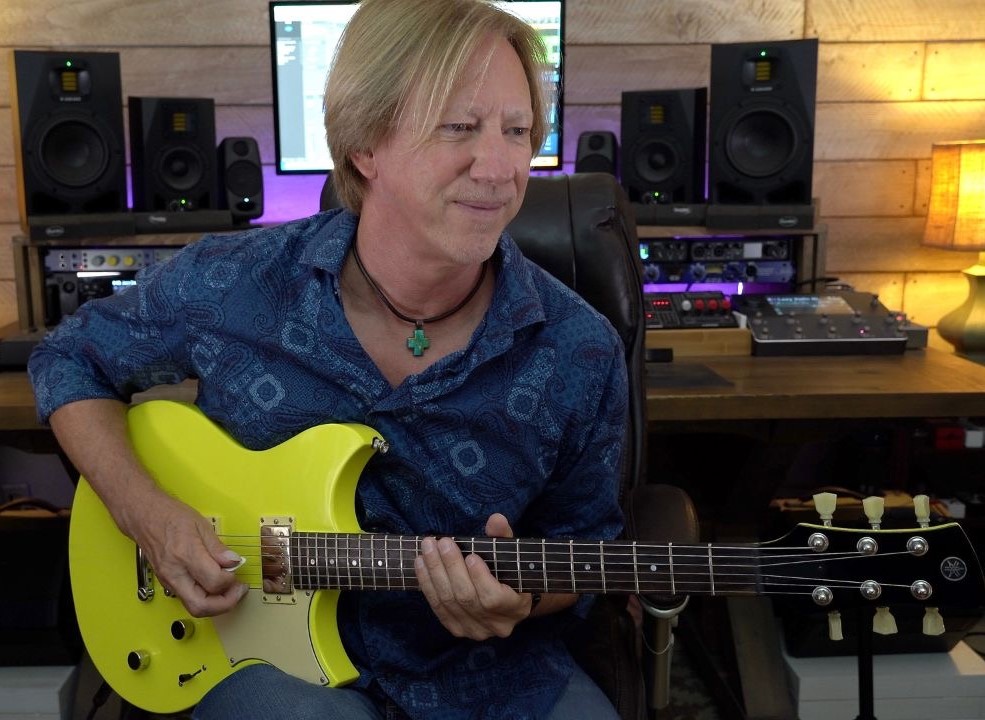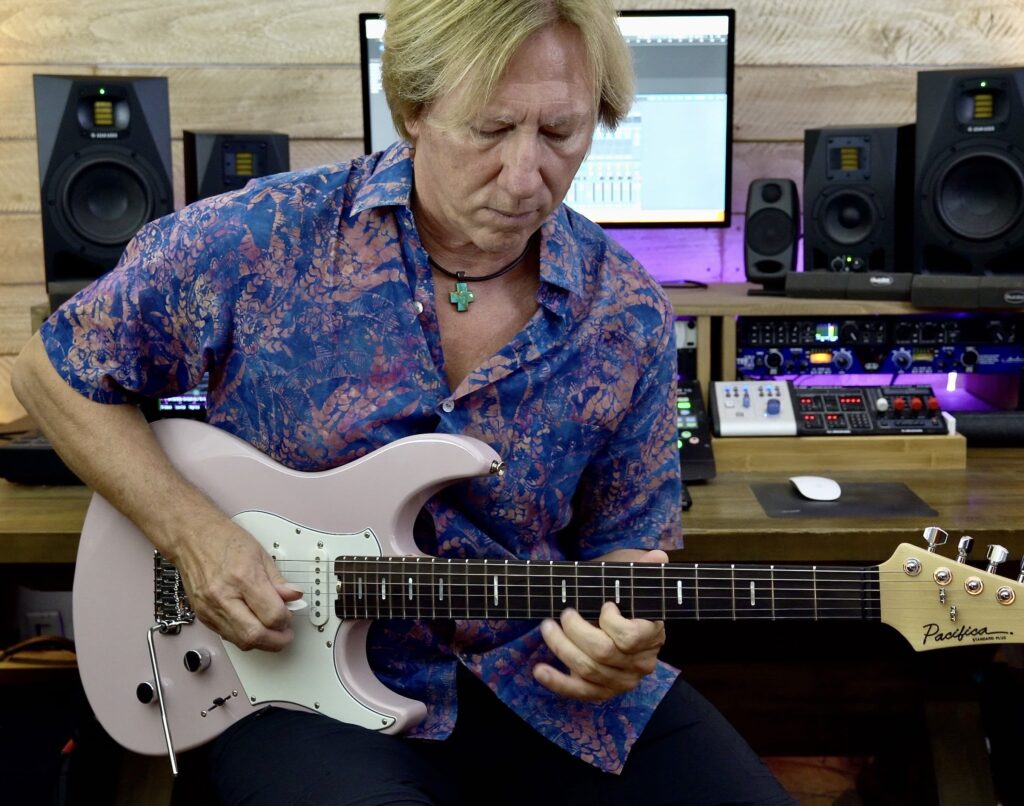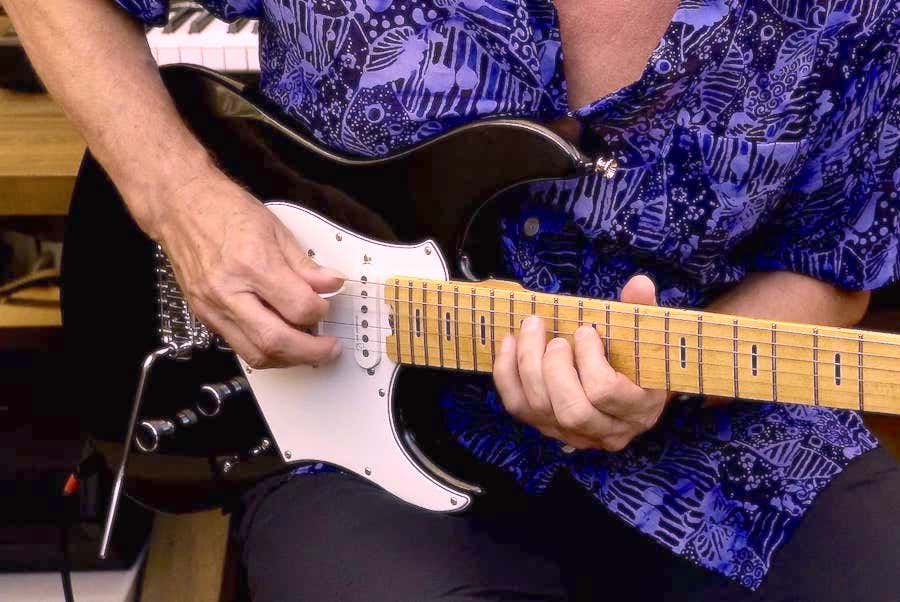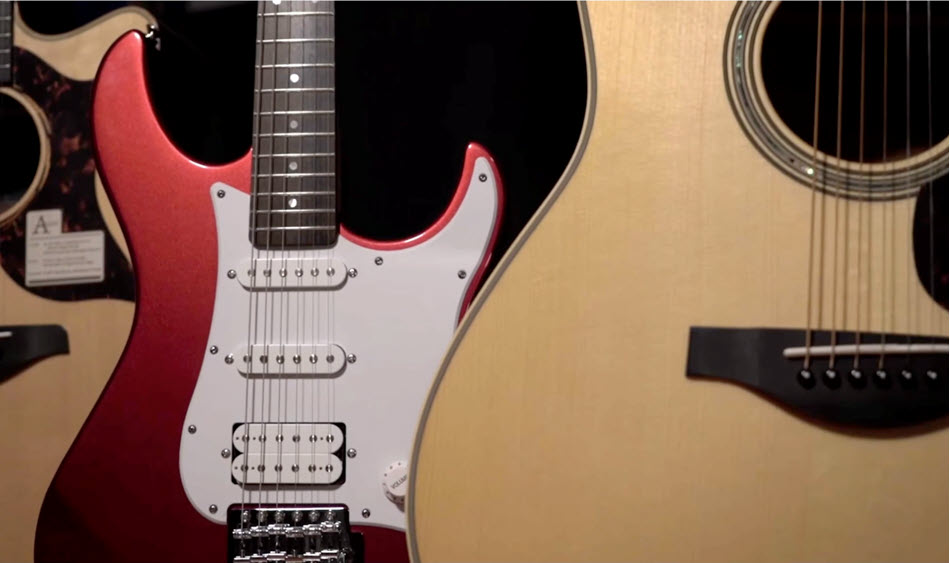Using the CAGED System to Expand Your Guitar Vocabulary
Fretboard navigation made easy.
Learning to play the guitar may be one of the most rewarding pursuits you’ll ever take on … but it may also be one of the most frustrating, for many reasons.
When I started out, instructional resources were limited to local teachers, books and magazine articles, plus jamming with friends, and of course, listening to records. (You know, those large black vinyl discs we treasured so much.)
Guitar players are lucky these days. Information on just about any subject can be found online instantaneously (though it may not necessarily be correct) and demonstrated via videos on YouTube and other services. AI is already emulating famous artist’s voices, making suggestions on chord progressions that an artist would likely use for a hit song, and creating tablature and notation for an “in the style of” melodic simile.
How does all this impact the musician who’s learning to navigate a guitar fretboard for the first time? What about a player who’s looking to expand beyond the basic chords?
The fact of the matter is, regardless of the virtual resources available, a physical entity still needs to move the strings, form harmonic structures and melodic phrases, then combine them into rhythmic structures that make musical sense. And one of the best ways to springboard your knowledge of the fretboard and bring your playing chops into new realms of expression is something called the CAGED system. Ready to learn more? Read on …
What is the CAGED system?
The origins of the CAGED system are somewhat murky, but it seems to have been developed some time in the mid-1970s. Simply put, it’s a way of navigating the guitar neck by logically mapping out chord shapes and their associated major scales. The five letters in the name literally refer to the open chord shapes of C, A, G, E and D:
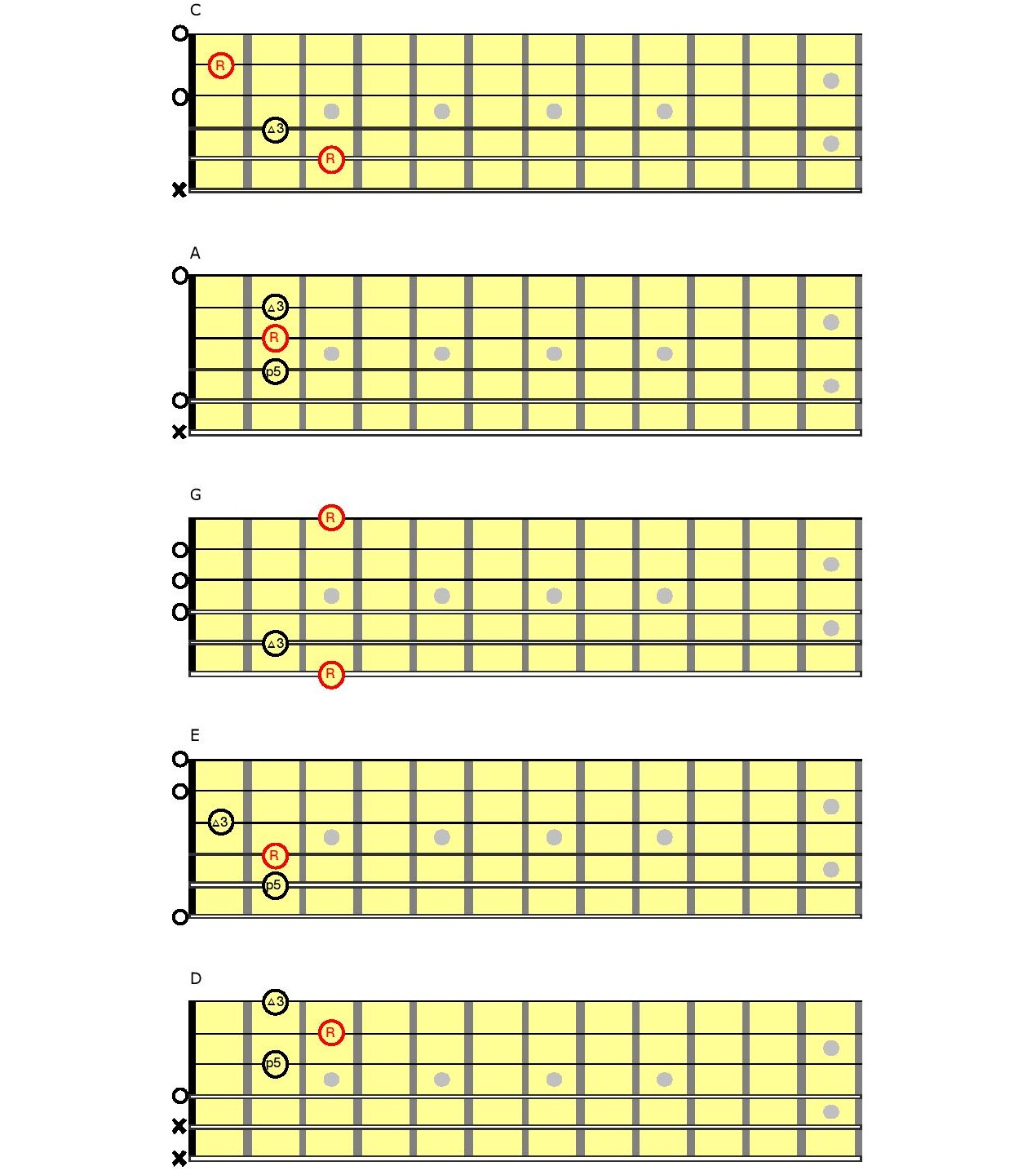
These five shapes can be used to create other major chords by moving them up the fretboard with a barre (your index finger laid across all six strings) or by fixing a capo behind them. However, knowing where the root note is within each chord shape is extremely important. As shown in the illustration above, the G and E chords have a sixth-string root note (the lowest note marked with a red “R”), while the A and C chords have a fifth-string root note, and the D chord has a fourth-string root note.
The E chord becomes a G chord if you create a barre across the strings at the third fret with the index finger and use your other fingers to place the E shape above that barre, like this:
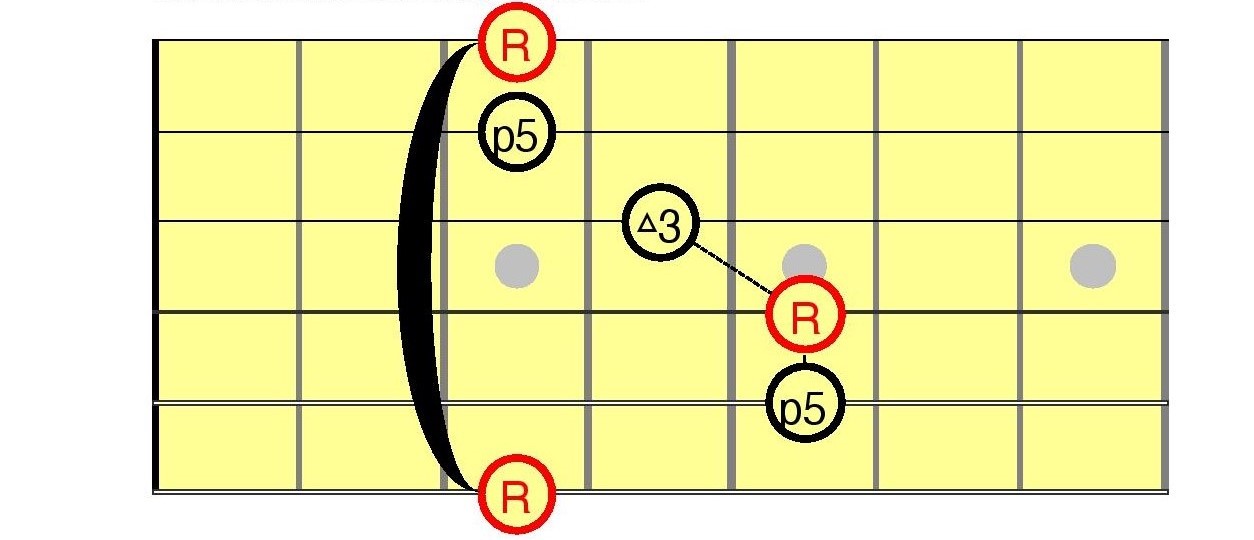
The barre, in effect, is acting as the nut on your guitar, raising the open strings to that of the fretted tones.
You can take this same approach with each of the open chords in the CAGED system. For example, here’s how to create a C chord with each of the initial open chord shapes:

Once you know where the root note exists in each of those shapes, you can utilize them for any major chord, at any pitch along the fretboard.
Usable Fingerings?
Sounds easy, right? Well, in my opinion, these moveable barre-chord shapes are not that practical to the modern guitar player. That’s because they require you to relearn how to play the five basic chord shapes using different fingerings, since your index finger is now being utilized to form the barre.
Try playing the barre chord versions of these five chords. Do you think you’ll actually use all of them in your day-to-day playing? The E and A shapes, probably, because they’re relatively easy to finger, but the C, G and D shapes? Not me. Too much hand fatigue!
However, being able to see how each of those shapes link together along the fretboard is a great way to visualize where the root, third and fifth of the chords fall. It’s also an excellent way to see the resolution point (the resting place of a chord progression, sometimes called the tonal center) within each scale shape, which is imperative to creating solid improvisations.
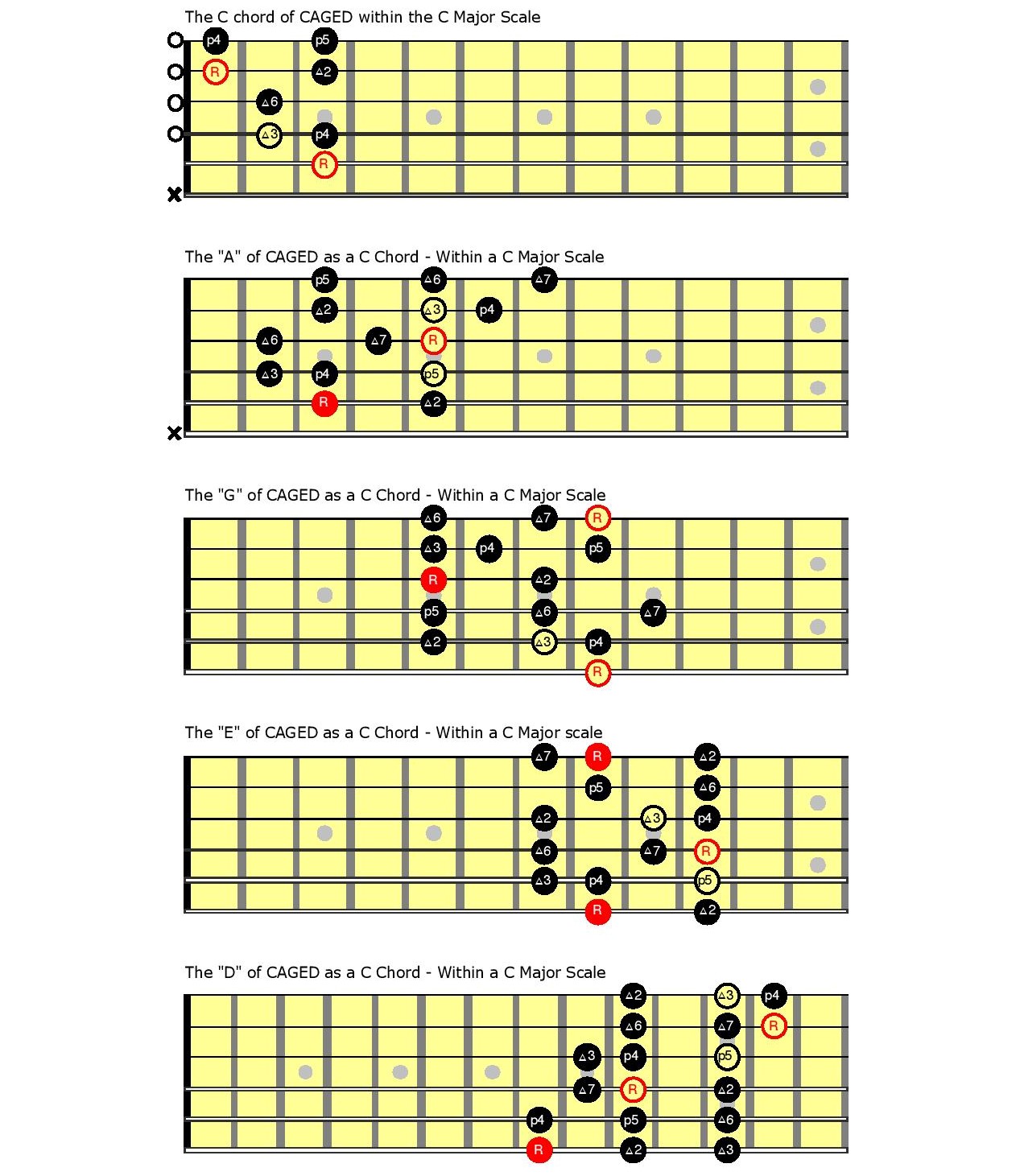
Using a Capo
Using a capo allows you to play all the CAGED chord shapes anywhere along the fretboard without having to barre with your index finger. This approach keeps the original voicing intact, enabling you to use your pinky to further embellish those chords with suspended fourths, add 2, and other melodic extensions.
As discussed in a previous posting, chords are built from scales, and each of the five CAGED shapes are built from major scales. That’s why all those scale shapes, and the tones within them, move in tandem when using a capo to change pitch.
Working with a Singer
The CAGED system is also a great way to adapt to working with a singer. Let’s say your vocalist would like you to play the song you are working on in another key. Instead of changing the chords and voicing you’re currently using, you can instead use a capo to raise the pitch — a much easier solution.
For example, if you want to change the key from C to C#, simply place the capo at the first fret, and you are instantly in the key of C#! You can continue raising the capo if higher pitches and keys are required.
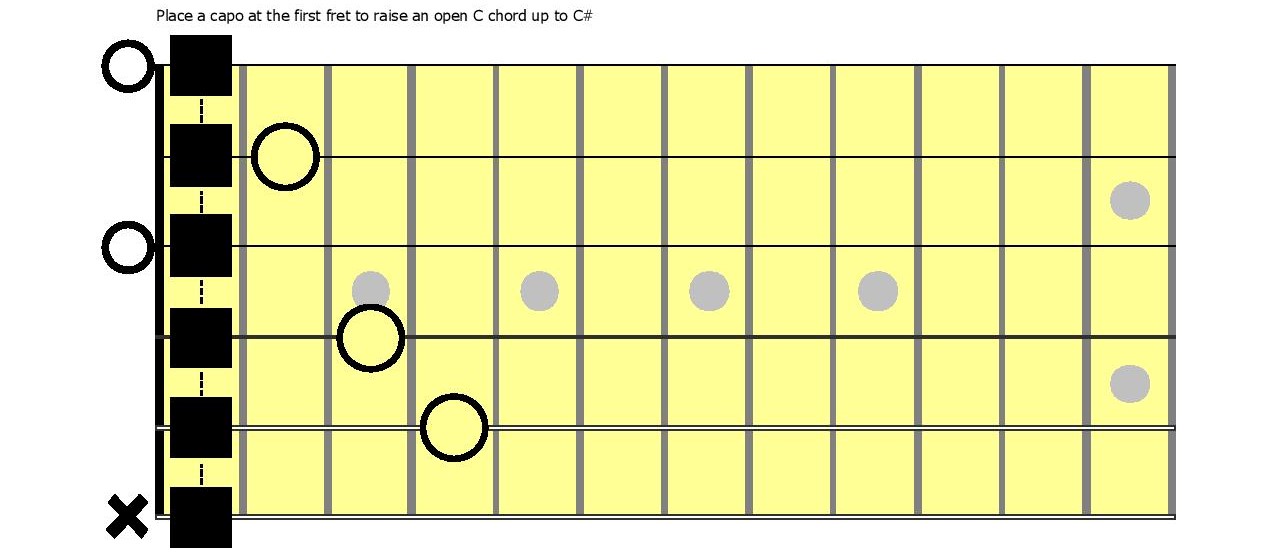
But what if the singer wants the song in a lower key than C? The first step here is to determine the harmonic structure of the chord progression. For example, if it’s a I-IV-V progression in the key of C, those chords would be C, F, and G major.
If the singer would like to hear the song in B♭, you’d find a CAGED chord with a sixth-string root, as this is lower in pitch than the fifth-string root of C: G, for example. Here, the I-IV-V chords would be G, C, and D major.
Now place your capo at the third fret; this raises the root of the G chord up to B♭ (you are now in the key of B♭), then play the G, C and D chords, as shown below.

If the singer wants to try the key of B, raise the capo one more fret; if they want to try the key of A♭, simply move the capo to the first fret and play the same chord shapes. It’s that easy!
Using a capo is the best way to utilize the CAGED system without using four-finger barre chord voicings … and without the hand fatigue those shapes may induce.
The Video
This guitar and vocal demo, which I performed at a Yamaha clinic at Replay Guitar Exchange in Tampa, demonstrates how the use of a capo can easily transpose a I-IV-V progression in the key of D up to F.
As you can see, the capo allows me to retain the same fingerings and melodic embellishments while placing the chord structure in the perfect key for my vocals.
The Guitar
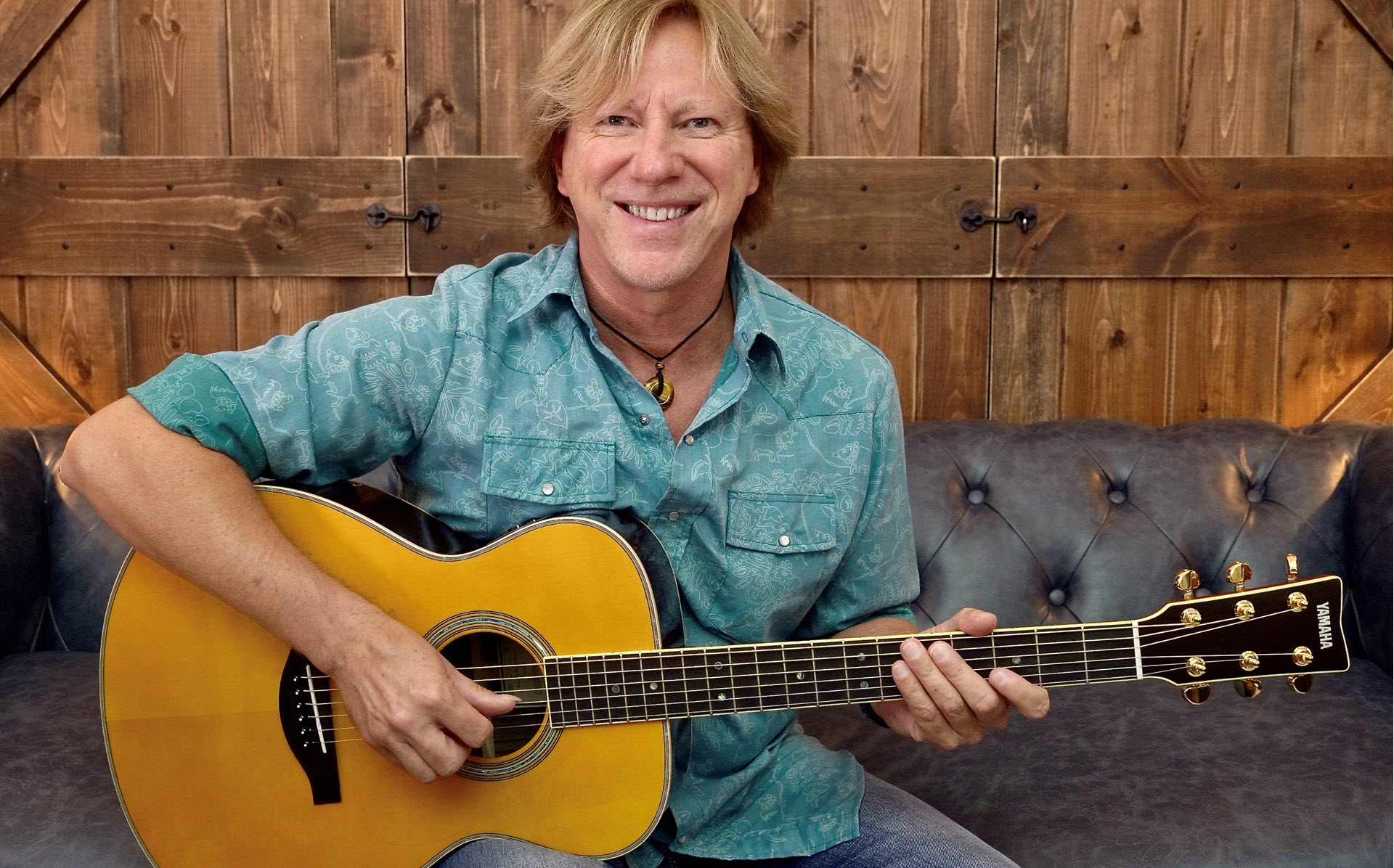
The Yamaha LS-TA TransAcoustic guitar I’m playing in the video features stunning onboard chorus and reverb effects without the need for an amplifier. These ambient effects literally float in the air, further enhancing the musical experience for the player and audience alike.
The guitar’s solid Sitka spruce top and rosewood back and sides — traditional tonewoods that will only get better with age — add clarity and warmth, making for a uniquely pleasurable tonality.
The Wrap-Up
The CAGED system will definitely help you locate chords, keys and progressions on your guitar’s fretboard. In some ways, it’s imperative to know this information.
Pair that knowledge with the practicality a capo affords us all, and you have the keys to the chordal kingdom … without the physical challenges and harmonic limitations that the larger CAGED shapes impose.
Photographs courtesy of the author.











